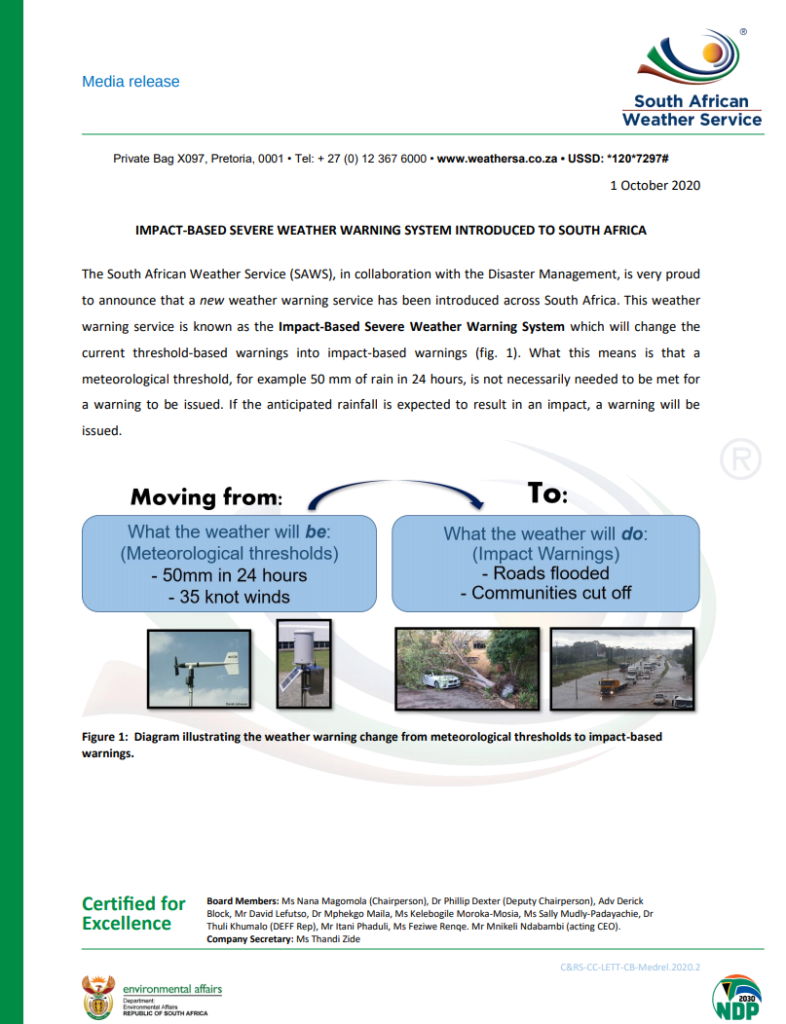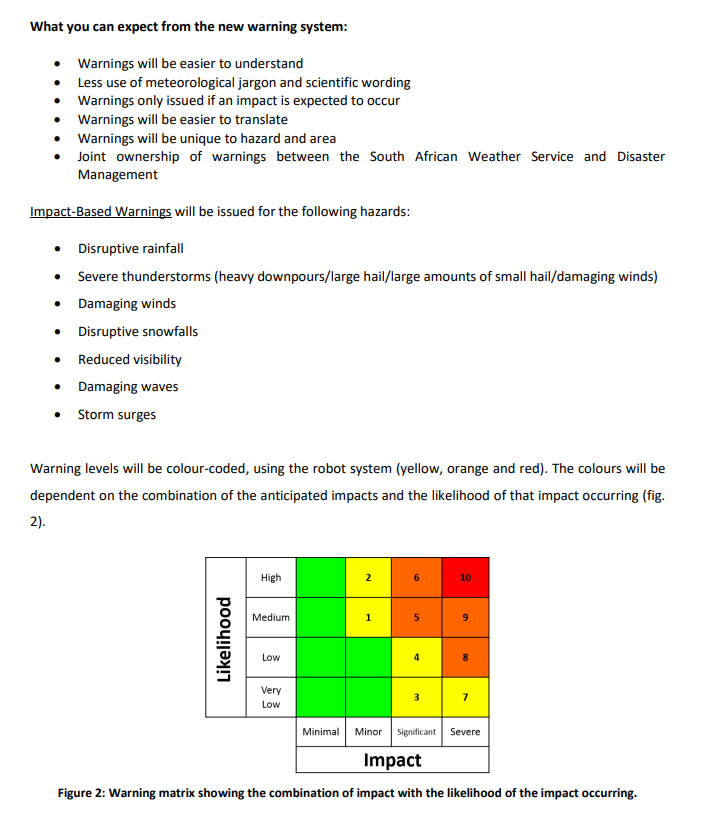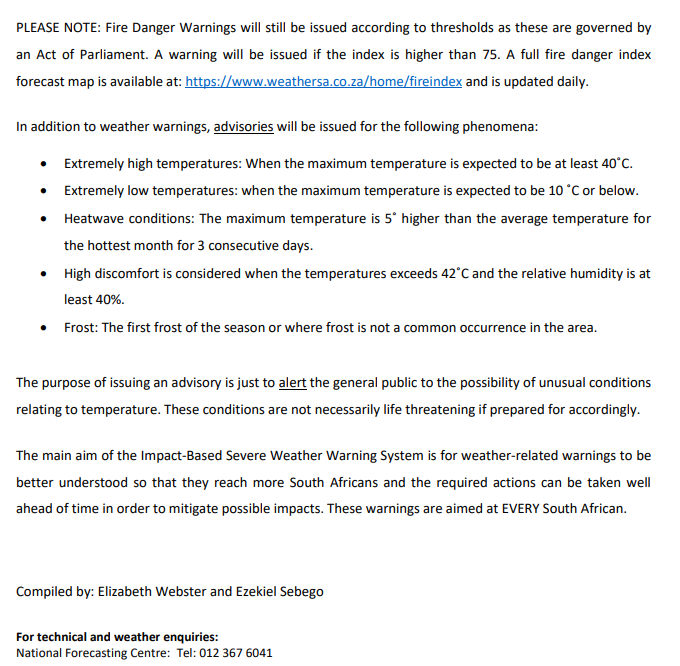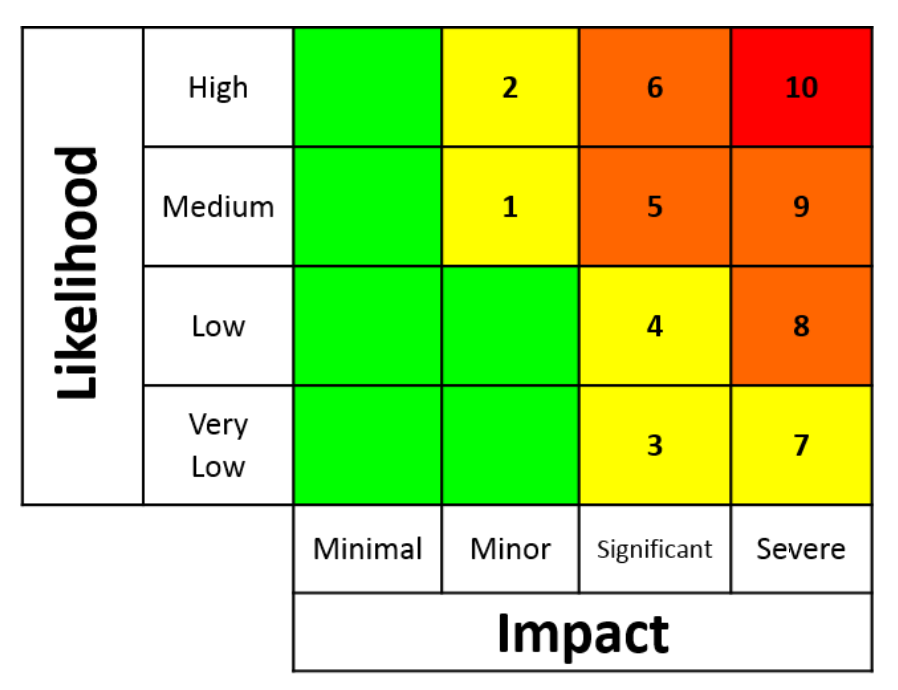Last Updated on 1st January 2021 1:27 PM by AfriWX
New weather warning service on the cards for SA — here’s how it will work
The South African Weather Service (SAWS), in collaboration with the Disaster Management, is very proud to announce that a new weather warning service has been introduced across South Africa.
The system, known as the impact-based severe warning system, is expected to give a practical and easier indication of weather conditions. It was launched in collaboration with Disaster Management.
This weather warning service is known as the Impact-Based Severe Weather Warning System which will change the current threshold-based warnings into impact-based warnings (fig. 1). What this means is that a meteorological threshold, for example 50 mm of rain in 24 hours, is not necessarily needed to be met for a warning to be issued. If the anticipated rainfall is expected to result in an impact, a warning will be issued.
“What this means is that a meteorological threshold, for example 50mm of rain in 24 hours, is not necessarily needed to be met for a warning to be issued. If the anticipated rainfall is expected to result in an impact, a warning will be issued,” SAWS said.
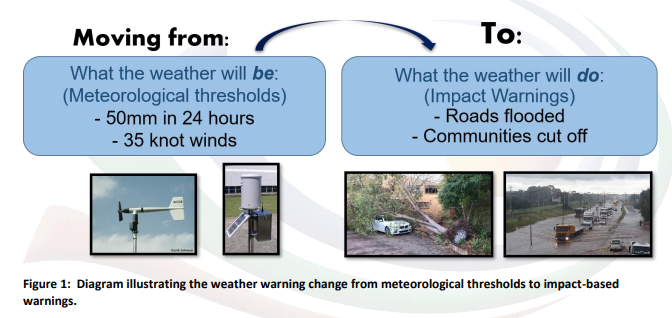
What you can expect from the new weather warning system:
• Warnings will be easier to understand
• Less use of meteorological jargon and scientific wording
• Warnings only issued if an impact is expected to occur
• Warnings will be easier to translate
• Warnings will be unique to hazard and area
• Joint ownership of warnings between the South African Weather Service and Disaster Management
Impact-Based Warnings will be issued for the following hazards:
• Disruptive rainfall
• Severe thunderstorms (heavy downpours/large hail/large amounts of small hail/damaging winds)
• Damaging winds
• Disruptive snowfalls
• Reduced visibility
• Damaging waves
• Storm surges
Warning levels will be colour-coded, using the robot system (yellow, orange and red). The colours will be dependent on the combination of the anticipated impacts and the likelihood of that impact occurring (fig.
2).
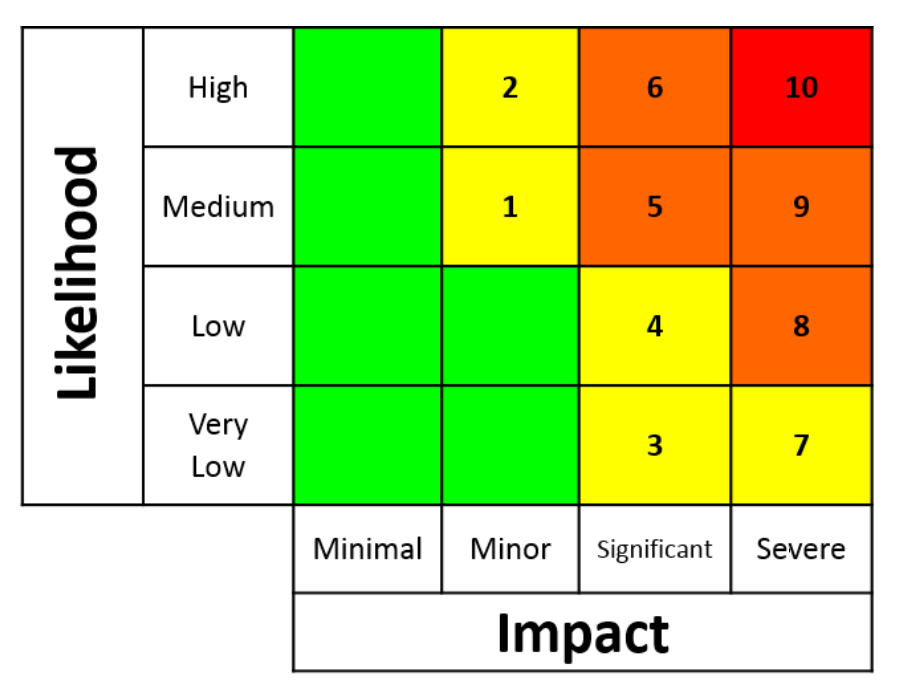
PLEASE NOTE: Fire Danger Warnings will still be issued according to thresholds as these are governed by an Act of Parliament. A warning will be issued if the index is higher than 75. A full fire danger index forecast map is available at: https://www.weathersa.co.za/home/fireindex and is updated daily.
In addition to weather warnings, advisories will be issued for the following phenomena:
• Extremely high temperatures: When the maximum temperature is expected to be at least 40˚C.
• Extremely low temperatures: when the maximum temperature is expected to be 10 ˚C or below.
• Heatwave conditions: The maximum temperature is 5˚ higher than the average temperature for
the hottest month for 3 consecutive days.
• High discomfort is considered when the temperatures exceeds 42˚C and the relative humidity is at
least 40%.
• Frost: The first frost of the season or where frost is not a common occurrence in the area.
The purpose of issuing an advisory is just to alert the general public to the possibility of unusual conditions relating to temperature. These conditions are not necessarily life threatening if prepared for accordingly.
The main aim of the Impact-Based Severe Weather Warning System is for weather-related warnings to be better understood so that they reach more South Africans and the required actions can be taken well ahead of time in order to mitigate possible impacts.
These warnings are aimed at EVERY South African.
Compiled by: Elizabeth Webster and Ezekiel Sebego from the South African Weather Service
For technical and weather enquiries:
National Forecasting Centre: Tel: 012 367 6041
